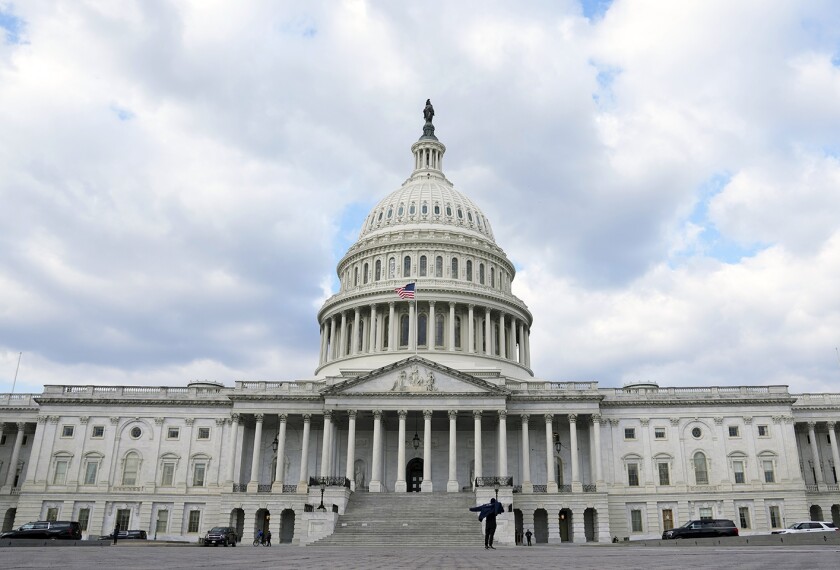After a decade of tracking state policies in key areas related to elementary and secondary education, Quality Counts this year significantly broadens its perspective to look at the connections between K-12 education and the other systems with which it intersects: early-childhood education, teacher preparation, postsecondary education, and economic and workforce development. For the first time, the report also examines what states are doing to facilitate the transitions from preschool to elementary school, at one end of the spectrum, and from secondary school to college and careers, at the other.
Read about the methodology for the Quality Counts survey in the related story, The EPE Research Center Annual State Policy Survey
The Editorial Projects in Education Research Center gathers information for Quality Counts through an annual policy survey of the 50 states and the District of Columbia. In addition to data collected on an ongoing basis, related to state efforts to develop K-12 academic-content standards, assessments, and accountability systems, this year’s survey included questions focused on what states are doing to better align expectations across the various levels of education and to ensure that students are ready to move from one stage of schooling to the next. The methodology for the survey can be found on this page. A list of indicators from the survey, as well as other sources, is located under Sources and Notes.
Standards and Accountability
The Standards and Accountability tables (see menu below) reflect more than a decade-long commitment by states to set K-12 academic-content standards and to hold schools and districts accountable for results. This year, for the first time, all 50 states and the District of Columbia receive credit in Quality Counts for having adopted standards in English, mathematics, and science. Only Iowa and Rhode Island lack academic standards in history.
States also continue to refine their standards over time, although the quality of such efforts can vary by grade and subject. Thus, a state may have high-quality standards in English/language arts at the high school level but not at the elementary or middle school level. Quality Counts reports on ratings by the American Federation of Teachers, which evaluates state content standards based on whether they are clear, specific, and grounded in content. The Washington-based AFT rated state science standards more positively than those in any other subject; 49 states and the District of Columbia received credit for having science standards that met the union’s criteria for at least one grade span (elementary, middle, or high school). The AFT also rated most state math standards as meeting its criteria (47 states and the District of Columbia) for at least one grade span.
| Data Download | |||||||||
|---|---|---|---|---|---|---|---|---|---|
|
In contrast, states fared less well on their English/language arts standards. Only 27 states and the District of Columbia earned credit for having clear and specific English standards for at least one grade span, down from 43 states last year.
That drop reflects the use of more-rigorous criteria by the teachers’ union. In prior years, the AFT looked at content standards for clusters of grades—elementary, middle, and high school—but this past year, the union judged standards for each grade span grade by grade because of a requirement for testing in each of grades 3-8 under the federal No Child Left Behind Act.
As a result, the union found significant repetition in standards across grades, including identical wording in more than half the English standards. Such repetition did not meet the AFT’s criteria for specificity.
Most states also supplement their content standards with resources or guides for teachers that elaborate on the standards themselves. Three-fourths of the states provide such resources in the four core subjects of English, math, science, and history. Only three states (Mississippi, Nevada, and South Dakota) do not offer any supplementary materials. States are most likely to offer supplemental resources in English (47 states and the District of Columbia) and least likely to do so in history (37 states and the District of Columbia offer history resources).
Many states also revise their standards on a periodic basis. More than two-thirds of states (35) have a regular timeline for revising academic standards. Twenty-nine states and the District of Columbia have revised or adopted their academic-content standards in at least one core subject (English, math, science, or history) as recently as 2006, while three states (California, Illinois, and Maine) have not revised their content standards in any core subject since 1999.
Under the No Child Left Behind Act, the results of state assessments can lead to consequences for public schools and districts that receive federal Title I money for disadvantaged students. While the 5-year-old law has numerous requirements for Title I schools based on whether they make adequate yearly progress, or AYP, many states choose to go beyond the federal law. Some add other criteria for evaluating schools, while others choose to apply the same consequences to all schools (Title I and non-Title I schools alike). For example, 29 states rate schools on criteria other than those mandated for calculating AYP. Five states (Arkansas, Delaware, Florida, North Carolina, and Tennessee) have received federal approval to use measures of individual student growth to help rate schools for adequate yearly progress during the current school year. Nine states use a growth model for state ratings, but not necessarily under the federal law.
Many states also have rewards, assistance, and sanctions for schools based on their performance, whether or not the schools receive Title I money. Seventeen states reward high-performing schools with additional funds, 35 provide some form of help to low performers, and 33 (up from 28 states last year) apply similar sanctions to both Title I and non-Title I schools that fail to meet achievement targets.
The most widely authorized sanctions are replacing a school’s staff members or restructuring schools, interventions authorized in 30 and 29 states, respectively. By contrast, only five states permit the withholding of funds from low-performing schools.
Assessments
Aligning state tests to state content standards continues to be a priority. Forty-four states and the District of Columbia use standards-based tests, often known as criterion-referenced tests. Sixteen of the 18 states that give tests designed to compare student performance against national norms (or norm-referenced tests) also give standards-based exams. Hybrid tests that incorporate elements of both CRTs and NRTs show limited popularity; of the 10 states that use them, only four do so exclusively.
All 50 states and the District of Columbia report that their tests are aligned with their content standards in English/language arts. Only Nebraska chooses to rely on local tests and standards to measure students’ math performance. Thirty-five states have aligned science assessments (up from 33 last year), but only 19 have aligned history tests, the one subject in which the federal law does not mandate state testing.
Forty-seven states and the District use multiple-choice items to measure student learning at the elementary, middle, and high school levels. Extended-response items, by nature more time-consuming to score because students fill in the responses, are used to test English/language arts in every grade span in 40 states and the District of Columbia. Only two states, Georgia (at the elementary level) and Kentucky (at all grade spans), use portfolios, or a representative sample of student work.
As states track student progress from year to year, it’s important for officials to have test scores that are comparable across the grades. Fewer than half the states have assessment systems that score tests in grades 3-8 on a common scale. Twenty-two states have such vertically equated assessments in English/language arts; 21 have them in mathematics. Forty-five states now have statewide student-identification systems that attach a unique code to each student so that student test scores can be linked to descriptive information about students or their schools.




